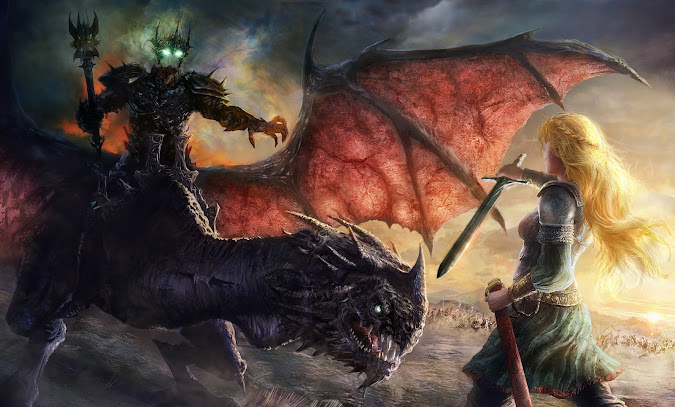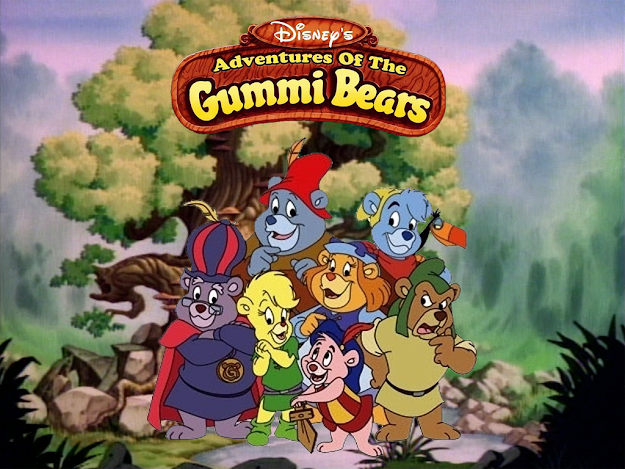Reading Advanced Dungeons & Dragons Part 2
CREATING THE PLAYER CHARACTER
Generation of Ability Scores: Not much to say about this section. Here we get options for those who don't like 3d6, straight down the line. Gygax clarifies that 3d6 straight is the default, but that the system isn't the best system, as it tends to generate mediocre characters with short life expectancies. Here we see four methods of character generation, which clearly lend themselves to four different styles of play. These include the standard 4d6, keep 3, arrange to taste; roll 12 times and keep the best six; roll each stat 6 times (in order), keeping the best individual 6 results; roll twelve sets of character stats and keep the best set. My feeling, not having tested these, is that method 3 is the most "munchkin" of the bunch, with method 4 a close second. Methods 1 and 2 seem somewhat balanced in terms of creating good characters without making ubermensch, but that's just a gut feeling.
Non-Player Characters: This section seems completely out of place here; it gives instruction for generating NPC stats...but the rest of the information on NPC generation isn't for another 99 pages. Advice for stat generation is standard fare: set the stats for important NPC's, use 3d6 for others.
Effect of Wishes on Character Ability Scores: Oh, and how this was needed back in the day! Everyone was itching for the Wish spell to turn their fighter into a powerhouse with 21 strength! However, it, too, feels out of place; it should be included in the "Character Spells" section with the rest of the spell restrictions, as the effect of a Wish spell has nothing to do with creating the player character.
We are now starting to see the first stirrings of problems that would later contribute to the "AD&D is complicated!" syndrome. The book, right from the beginning, has a tendency to read somewhat stream-of-consciousness, as though it is being compiled from reams of notes without a clear outline or organizational plan (which I am guessing isn't far from the truth).
Characteristics for Player Characters: Here we have a fun--if very brief--section involving creating the persona of PC's. It advises against using the NPC characteristic charts found later in the book (though I found those intriguing enough that a character could be randomly built from them) and encourages creativity on the part of the player. I feel a bit like this would've been better served in the Player's Handbook, one of several sections that left me with that feeling.
Player Character Non-Professional Skills: The first attempt to include a skills system into AD&D. Unfortunately, there's not much of an actual system to be found here. Rather, we have a list of medieval professions with a paragraph basically telling the DM to "Figure out how to use them yourself." A tad lazy, to be honest, given that all that was needed was brief writeups (to the tune of a few sentences) of each profession and a simple Ability Check roll-under system to complete it, say, "Roll under your Ability, using 1/2 character level as a bonus to the check"; such a system was later accomplished with the Nonweapon Proficiency system presented in the Wilderness and Dungeoneer's Survival Guides and Oriental Adventures and represents a superior skills system. Still, it's nice to see the bare bones introduced so early in the game.
Staring Level of Experience for Player Characters: This is an interesting section. It deals with the idea that games should start at first level, because part of the fun is actually surviving to second, third, and fourth. I've always agreed with this sentiment and newer games that have tried to make characters "more survivable" at lower levels leave a bad taste in my mouth exactly because they lose the fun of making it to second level, the sense of accomplishment that comes from advancing a character through those weak, formative stages. In AD&D, actually surviving to Level 2 gave you an investment in your character that, IMHO, later games with their powered-up low-level characters just don't provide.
Also interesting in this section is an assumption (largely lost in modern games) that a DM will be running more than one group in his world, and that all such gaming groups are part of the same campaign, just adventuring separately. I wonder if the world is that different, if we really have that much less time on our hands these days, that this doesn't happen anymore, or if Gygax and his cohorts were just that much more invested in role playing than the average player back then. I have vague memories in the 80's, though, of playing with DMs who ran multiple groups simultaneously in their worlds. It's been a very, very long time since then, though.
Generation of Ability Scores: Not much to say about this section. Here we get options for those who don't like 3d6, straight down the line. Gygax clarifies that 3d6 straight is the default, but that the system isn't the best system, as it tends to generate mediocre characters with short life expectancies. Here we see four methods of character generation, which clearly lend themselves to four different styles of play. These include the standard 4d6, keep 3, arrange to taste; roll 12 times and keep the best six; roll each stat 6 times (in order), keeping the best individual 6 results; roll twelve sets of character stats and keep the best set. My feeling, not having tested these, is that method 3 is the most "munchkin" of the bunch, with method 4 a close second. Methods 1 and 2 seem somewhat balanced in terms of creating good characters without making ubermensch, but that's just a gut feeling.
Non-Player Characters: This section seems completely out of place here; it gives instruction for generating NPC stats...but the rest of the information on NPC generation isn't for another 99 pages. Advice for stat generation is standard fare: set the stats for important NPC's, use 3d6 for others.
Effect of Wishes on Character Ability Scores: Oh, and how this was needed back in the day! Everyone was itching for the Wish spell to turn their fighter into a powerhouse with 21 strength! However, it, too, feels out of place; it should be included in the "Character Spells" section with the rest of the spell restrictions, as the effect of a Wish spell has nothing to do with creating the player character.
We are now starting to see the first stirrings of problems that would later contribute to the "AD&D is complicated!" syndrome. The book, right from the beginning, has a tendency to read somewhat stream-of-consciousness, as though it is being compiled from reams of notes without a clear outline or organizational plan (which I am guessing isn't far from the truth).
Characteristics for Player Characters: Here we have a fun--if very brief--section involving creating the persona of PC's. It advises against using the NPC characteristic charts found later in the book (though I found those intriguing enough that a character could be randomly built from them) and encourages creativity on the part of the player. I feel a bit like this would've been better served in the Player's Handbook, one of several sections that left me with that feeling.
Player Character Non-Professional Skills: The first attempt to include a skills system into AD&D. Unfortunately, there's not much of an actual system to be found here. Rather, we have a list of medieval professions with a paragraph basically telling the DM to "Figure out how to use them yourself." A tad lazy, to be honest, given that all that was needed was brief writeups (to the tune of a few sentences) of each profession and a simple Ability Check roll-under system to complete it, say, "Roll under your Ability, using 1/2 character level as a bonus to the check"; such a system was later accomplished with the Nonweapon Proficiency system presented in the Wilderness and Dungeoneer's Survival Guides and Oriental Adventures and represents a superior skills system. Still, it's nice to see the bare bones introduced so early in the game.
Staring Level of Experience for Player Characters: This is an interesting section. It deals with the idea that games should start at first level, because part of the fun is actually surviving to second, third, and fourth. I've always agreed with this sentiment and newer games that have tried to make characters "more survivable" at lower levels leave a bad taste in my mouth exactly because they lose the fun of making it to second level, the sense of accomplishment that comes from advancing a character through those weak, formative stages. In AD&D, actually surviving to Level 2 gave you an investment in your character that, IMHO, later games with their powered-up low-level characters just don't provide.
Also interesting in this section is an assumption (largely lost in modern games) that a DM will be running more than one group in his world, and that all such gaming groups are part of the same campaign, just adventuring separately. I wonder if the world is that different, if we really have that much less time on our hands these days, that this doesn't happen anymore, or if Gygax and his cohorts were just that much more invested in role playing than the average player back then. I have vague memories in the 80's, though, of playing with DMs who ran multiple groups simultaneously in their worlds. It's been a very, very long time since then, though.






To your last paragraph: I don't know that it's that people have less time. That may be the case with regards to us kids who were not of working age in the 80's. We now have 40+ hours of the week taken up, compared to 30 - 35 hours of school and that only from August/September to May/June back then.
ReplyDeleteThe other time eater is the variety of other options nowadays. Board games, card games, and especially video games of all sorts have further taken away prospective role playing gamers.
I could probably go on, but I want to stay brief. Again, thanks for writing this, Jason. It's great food for RPG thought.
Really enjoying this series. :)
ReplyDelete